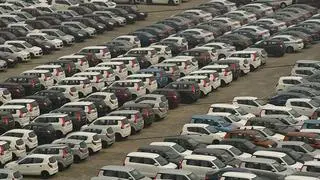The growth in tax collection in relation to GDP growth has improved over the past couple of years under the Modi regime.
In 2013-14, the final year of the UPA regime, tax buoyancy hit a four-year low at 0.71. Since then, it has improved to 1.23 in 2014-15 and 1.35 in 2015-16. While the improvement is good for the economy, the reliance on indirect taxes to improve tax buoyancy is not comforting.
About a week back, Finance Minister Arun Jaitley and P Chidambaram were at loggerheads over the issue.
While Jaitley waxed eloquent over the higher tax buoyancy, Chidambaram pooh-poohed the claim and asked how there could be higher tax buoyancy when GDP growth estimates are moderating. On Friday, the Central Statistical Office had projected a lower growth of 7.1 per cent for 2016-17.
Tax buoyancy is an important indicator of the efficiency and responsiveness of tax revenue mobilisation to GDP growth. It is calculated as a ratio of percentage growth in tax revenues to growth in nominal GDP for a given year. Tax is said to be buoyant if the gross tax revenues increase more than proportionately in response to a rise in GDP figures.
“Tax buoyancy is an important metric to know the expected level of government borrowings from the debt market,” said Sujoy Das, Head – Fixed income at Invesco Mutual Fund. He added that higher tax buoyancy would mean the government would borrow less — keeping interest rates lower — while giving room for corporates also to borrow at lower rates.
For the purpose of calculation, gross tax revenues of both the Centre and the States were taken into consideration given that the tax sharing percentage keeps changing. For instance, the Fourteenth Finance Commission last year increased States’ share in Central taxes to 42 per cent from 32 per cent earlier.
Having a tax buoyancy figure of more than one has a salubrious impact on the fiscal deficit ratios, finds a study. A 2014 IMF study of 34 OECD nations found that about half of them who were able to improve their deficit ratios had long-term tax buoyancy figures above one.
Reliance on indirect taxesInterestingly, in the case of India, when the tax buoyancy figures were sliced — to look at tax buoyancy of direct and indirect taxes of both the Central and State governments — it showed that it was indirect tax buoyancy that spruced up overall tax buoyancy figures since 2010-11.
A steady increase in service tax collections, as the net was widened and additional cess imposed, was one of the factors boosting indirect tax collections in recent years.
In contrast, prior to FY11, it was direct taxes that pushed up the overall tax buoyancy figures. In the high growth years of 2004-05 to 2007-08, direct tax buoyancy averaged two; hitting a record high of 2.3 in 2006-07.
Rising income and higher corporate earnings could have led to higher tax collections in this period. But surprisingly, direct tax buoyancy has steadily deteriorated since 2007-08, averaging at 0.9. This implies that the Centre had given up on expanding the tax base or garnering higher taxes from individuals and companies and had instead taken the softer option of increasing indirect taxes.
Indirect taxes are inequitable as they tax both the rich and poor alike, but collection is far easier. This strategy is, therefore, not laudable. Taxes such as corporate and personal income taxes are also known as ‘automatic stabilisers’ in the world of economics. They help in stabilising economic cycles without explicit government action. So, for instance, if an individual taxpayer earns higher income, his additional income is subject to more taxes, which in turn helps keep a check on excessive consumption.








Comments
Comments have to be in English, and in full sentences. They cannot be abusive or personal. Please abide by our community guidelines for posting your comments.
We have migrated to a new commenting platform. If you are already a registered user of TheHindu Businessline and logged in, you may continue to engage with our articles. If you do not have an account please register and login to post comments. Users can access their older comments by logging into their accounts on Vuukle.